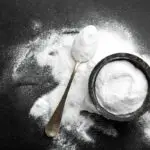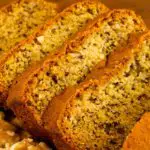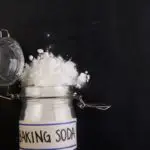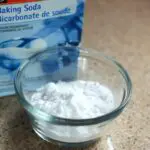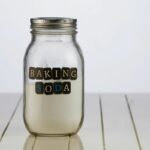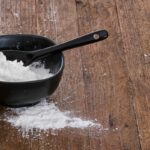Baking soda is one of those ingredients that often gets forgotten when we’re whipping together some tasty homemade treats. It usually sits at the back of the baking cupboard, in a small pot; and it’s rarely used for everyday cooking — Who could blame us?
For some reason, I’m particularly negligent of this handy ingredient when I’m making cookies. I just get so excited to tuck into some fresh, warm bakes that I forget the low-key ingredients the recipe calls for.
But what does baking soda do in cookies, and how does its absence impact the final product? That’s exactly what we’ll be discussing today!
Baking Soda (Sodium Bicarbonate) – What Is It?
You’ll find baking soda in almost every single cookie recipe, so it’s clearly very important; some might say it’s even more critical than more obvious ingredients like brown sugar or melted butter.
In a nutshell, baking soda – the chemical formula of which is NaHCO3 – is a leavening agent, or, in other words, it’s that magical ingredient that makes our baked goods light and fluffy.
It’s composed entirely of pure sodium bicarbonate, and it’s not just a staple of cookie recipes, but anything that you want to get a bit of a rise out of in the oven.
Now let’s dive deeper, shall we?
How Does Baking Soda Work?
Baking soda is an alkaline substance, and the leavening process is activated when it comes into contact with acidic ingredients and a liquid. Together, these ingredients are generally known as leavening agents.
Oftentimes, acidic liquids will be used to kill two birds with one stone, which is why a few drops of an acidic ingredient such as lemon juice are so often included in our favorite cookie recipes.
An alternative citrus juice will work fine too, or failing that, sour cream or buttermilk will be your saving grace.
Once the leavening agents meet, the baking soda releases carbon dioxide gas that helps our baked goods rise. You can almost think of it as baking burps, surging up through our food, seeking release, and in their path, these burps leave footprints of sorts: lovely, light, fluffy air bubbles.
Sounds pretty good, right? In fact, I’m drooling just writing about it, but there is one downside to this magical ingredient… It increases our sodium intake, so in many ways, it’s to be consumed in moderation, much like some of the sweeter ingredients in a cookie recipe.
What’s The Difference Between Baking Soda And Baking Powder?
Many believe baking soda and baking powder to be the same thing, and will often substitute baking soda for powder, but, although they are similar, they aren’t exactly analogous.
Unlike baking soda, which only contains sodium bicarbonate, baking powder arrives with sodium bicarbonate pre-mixed with a solid acid, meaning all that is needed for activation is a liquid.
From there on out, the process is exactly the same: the chemical reaction produces carbon dioxide, helping our batter rise. But much like baking soda, baking powder increases salt content in a recipe.
What’s The Deal With Double Acting Baking Powder?
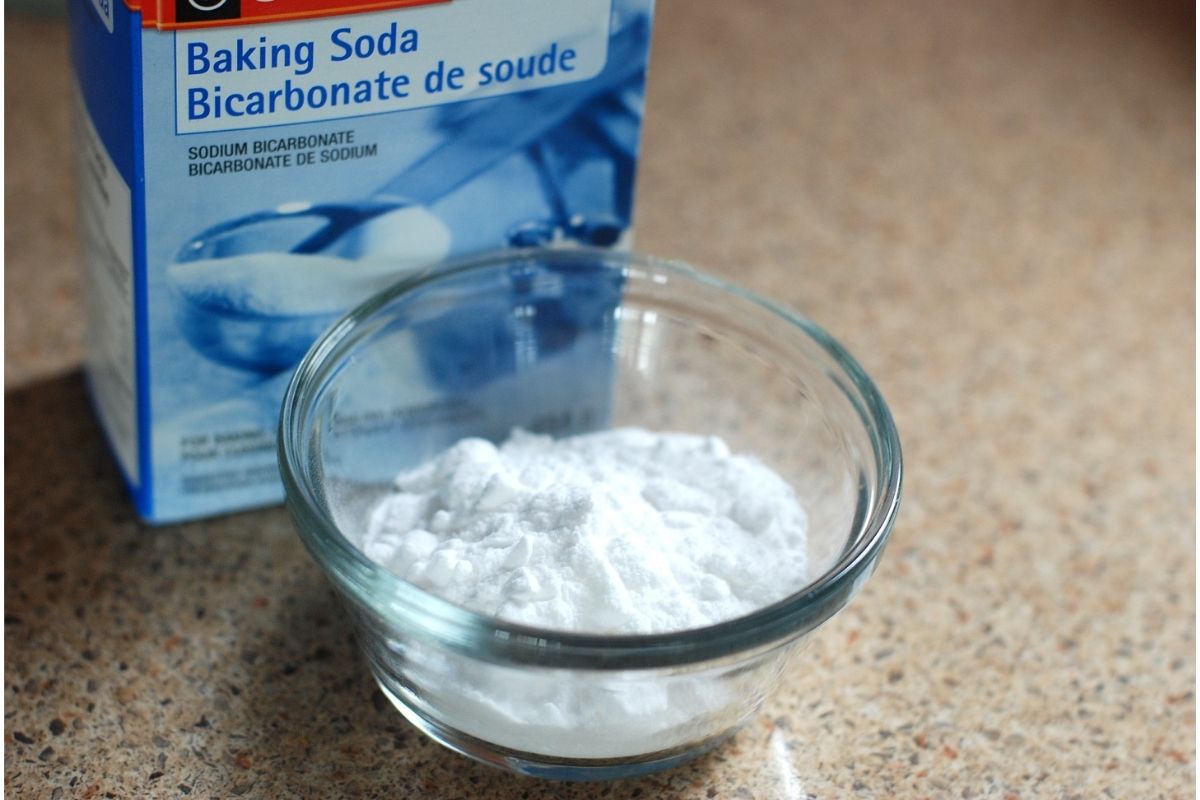
You can also get double acting baking powder, meaning it reacts once when combined with a liquid in the mixture, then again in the oven when exposed to heat, giving you an extra fluffy bake!
Double acting baking powders are also helpful if you’re pressed for time, as you won’t have to get the bake in the oven right away to completely leaven the final product.
What Does Baking Soda Do In Cookies?
Okay, so we’ve established that baking soda is a leavening agent and that it helps to bring our baking recipes to life with a rising action, but cookies are famously flat, so does it really matter if we forget the sodium bicarbonate from time to time?
Well, kind of, yes.
Sure, they’re a flat treat… but not completely; cookies rise a little in the oven if a recipe has been followed correctly.
If we omit the baking soda from the recipe, our cookie dough will thin before protein coagulation can provide structural integrity.
The result will be our cookies turning into puddles instead of thick, chewy chocolate chip masterpieces. This is why every cookie recipe calls for baking soda – any cookie recipe worth its salt, anyway (pun definitely intended).
The carbon dioxide from the baking soda in your cookie recipe will help your cookies bake upwards rather than outwards and imbue them with that signature chewy softness we crave. So, when making cookies, try your hardest to remember the baking soda.
Substitute Baking Soda
For the perfect cookies, most recipes call for baking soda, but don’t worry if you’ve made your cookie dough and just realized you don’t have any in the cupboard, as substituting baking soda is fairly easy.
Do bear in mind, though, that when using some of these alternatives, you may have to amend the baking process ever so slightly.
- Potassium bicarbonate: If you’re watching your sodium intake, potassium bicarbonate is the way to go, as it will produce carbon dioxide and thus has a similar leavening effect, but doesn’t add to the sodium content of your delicious home baked cookies.
- Baking powder: If salt isn’t an issue, or you don’t have any potassium bicarbonate around, you can absolutely swap out the baking soda in the recipe for some baking powder. Your cookies may end up with a slightly cakey texture, but they’ll still be absolutely delicious.
- Egg whites: This is a strange one, but it really does work. In a pinch, simply use some eggs to mimic soda, but get rid of the yolks first.
- Sour milk: No eggs around? No problem, a splash of sour milk will do the trick.
- Self raising flour: As the name suggests, self raising flour is also a leavening agent, so it can be quite impactful if you don’t have any soda or baking powder about. Add a sprinkle to your dough, set it to cook, and watch the magic happen.
- Baker’s ammonia: This one’s an old-school fix. It’s essentially what every baker used before baking soda was created.
- Active dry yeast: Although yeast is most commonly associated with bread, it’s an awesome soda substitute, and unlike baking powder, it doesn’t have a detectable taste – hooray!
Final Thoughts
So now that you know the truth about baking soda and cookies, what are you gonna go for? Classic chocolate chip cookies? Indulgent triple chocolate?
Or maybe my personal favorite, raspberry and white chocolate? Whatever you choose, pop some baking soda in the mix, and they’ll no doubt have the perfect texture and taste amazing.

